Programme for International Student Assessment (PISA 2022): Scotland's results - highlights
Report covering Scotland's performance in the Programme for International Student Assessment (PISA) 2022, covering maths, reading, and science.
3. Performance in reading
3.1 Scotland's performance in reading
72. Scotland's mean score in reading in 2022 (493) was higher than the OECD average (476) . It was similar to 2006, 2009, 2012 and 2015 and lower than 2000, 2003 and 2018 (Chart 3.1.1).
73. Scotland's standard deviation in reading in 2022 was 103 points. This was higher than 2018 (95 points), 2015 (91 points), 2012 (87 points) 2009 (94 points) and 2006 (96 points). This means there was more variation between students' reading performance in 2022 than there was in previous years.
74. In 2022 in Scotland, girls' reading performance was higher than boys' (502 vs. 484). This is a consistent historic trend (Chart 3.1.2 and Chart 3.1.3).
75. The OECD define second generation immigrants as students where one or both parents were born in another country (i.e. not in the UK). First generation immigrants are where the student was born in another country (i.e. not in the UK). Non-immigrants are where the student and both parents were born in the UK. In 2022, the performance of first generation immigrant students (475) was lower than non-immigrant students (498) in reading. The performance of second generation immigrant students (500) was similar to non-immigrant students and first generation immigrant students.
76. Achievement of PISA Level 2 is considered by the OECD to be the baseline at which students begin to demonstrate sufficient skill to enable them to participate actively in life situations involving reading. In 2022, 20.3 per cent of students in Scotland performed below PISA Level 2 in reading, which was lower than the OECD average (26.3 per cent). This was higher than 2018 (15.5 per cent) and 2012 but similar to 2006, 2009 and 2015.
77. PISA defines students attaining above Level 5 as top performers. In 2022, 9.6 per cent of students in Scotland performed at PISA Level 5 or better in reading, which was higher than the OECD average (7.2 per cent). The proportion of students performing at PISA Level 5 or better in Scotland was higher in 2022 than in 2015 (6.4 per cent) and similar to 2006, 2009, 2012 and 2018 (Chart 3.1.4).
78. In 2022, a greater proportion of boys (23.2 per cent) than girls (17.3 per cent) performed below PISA Level 2 in reading. In 2022 the proportions of girls and boys performing at PISA Level 5 or better in reading were similar (10.8 per cent of girls and 8.4 per cent of boys).
79. The strength of the relationship between students' background and reading test scores (share of variation) in 2022 (11.1 percent) was similar to all previous years. For more information on ESCS please Annex 3.
80. The ESCS gradient shows how much score varies on average with each step (one point) in social background. The ESCS gradient was 37 points in the reading assessment for Scotland in 2022. This was similar to 2006 (42 points), 2009 (44 points), 2012 (34 points), 2015 (32 points) and 2018 (32 points).
81. The average scores in reading in Scotland of students from less affluent backgrounds (i.e. those at the 5th percentile by ESCS) and those from more affluent backgrounds (i.e. those at the 95th percentile by ESCS) are apart by 107 points, which implies a difference of around three-and-a-half years' of schooling.
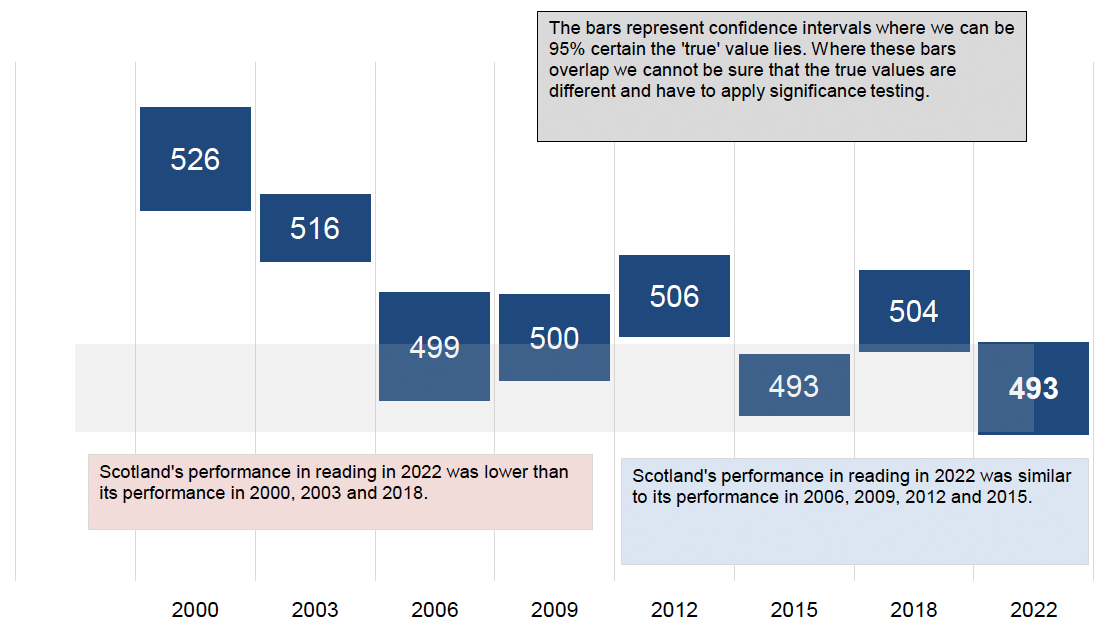
Scotland’s mean score in reading in 2022 was statistically similar to that in 2012. For more information see Annex 3.
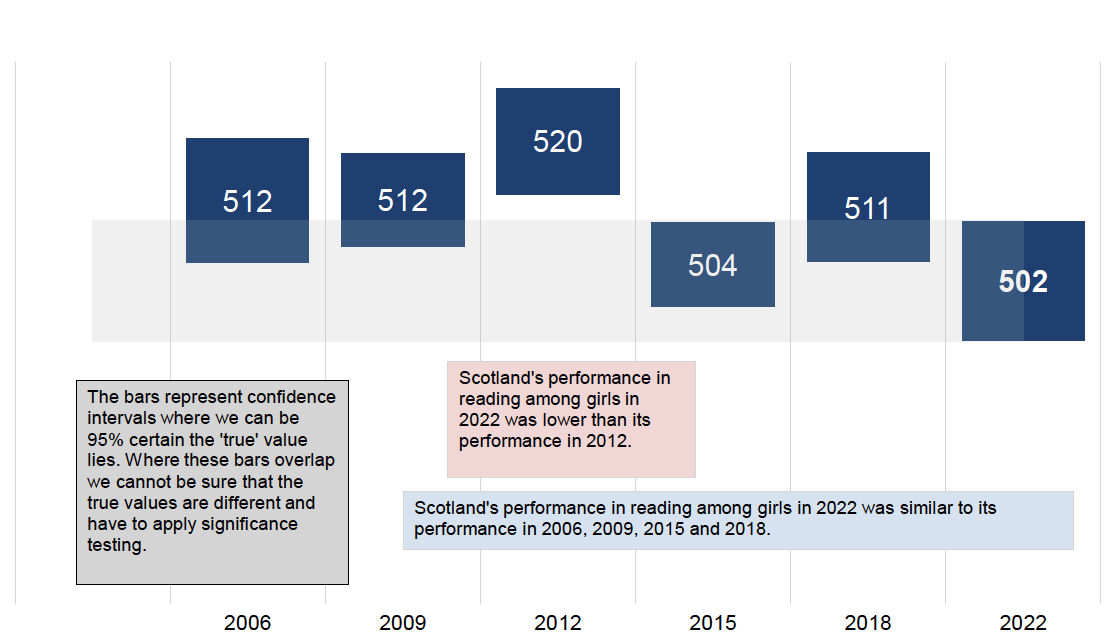
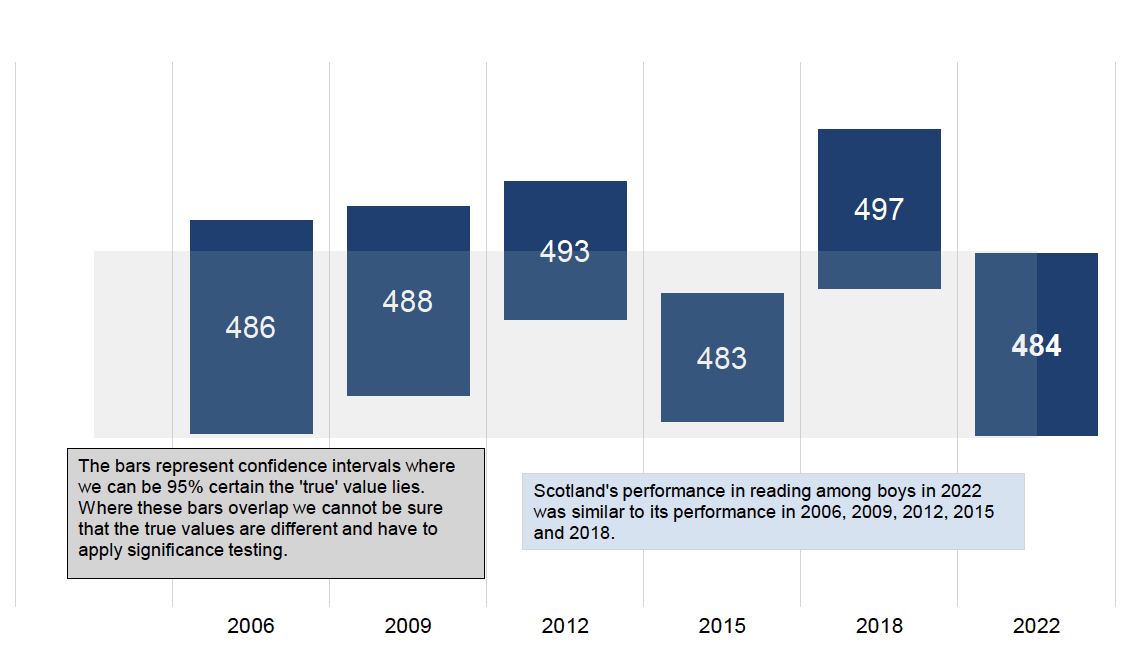
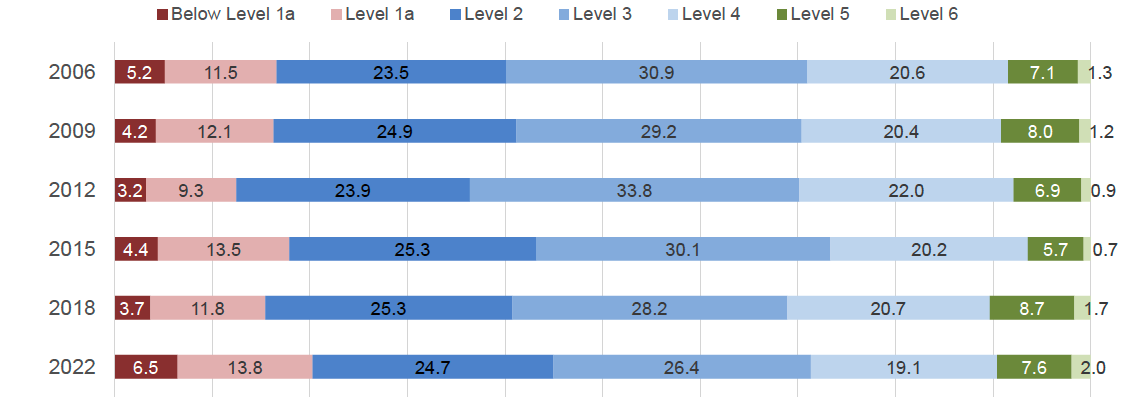
82. As set out in Annex 2, the OECD categorise students into Levels according to their ability to undertake certain tasks. However the group below Level 2 merits particular attention, as the OECD consider that Level 2 is the baseline of proficiency in reading.
83. In 2022, 20.3 per cent of students in Scotland performed below PISA Level 2 in reading. This was higher than 2018 (15.5 per cent) and 2012 but similar to 2015, 2009 and 2006. In 2022, 9.6 per cent of students in Scotland performed at PISA Level 5 or better in reading. This was higher than in 2015 (6.4 per cent) and similar to 2006, 2009, 2012 and 2018.
3.2 Scotland's performance in reading relative to countries in the OECD and UK administrations
84. Scotland's mean score in reading in 2022 (493) was higher than the OECD average (476). It was higher than 24 countries, including Wales (466), similar to eight countries, including England (496) and Northern Ireland (485), and lower than seven countries, including Ireland (516). See Chart 3.2.1 for more information.
85. Scotland's mean score in reading among girls in 2022 (502) was higher than the OECD average (488). It was higher than 21 countries, similar to 10 countries and the UK as a whole (503), and lower than eight countries (Chart 3.2.2).
86. Scotland's mean score in reading among boys in 2022 (484) was higher the OECD average (464). It was higher than 26 countries, similar to eight countries and the UK as a whole (486) and lower than five countries (Chart 3.2.3).
87. In 2022 in reading, second generation immigrant students in Scotland performed higher (500) than the OECD average (461). They performed higher than 20 countries, similar to 13 countries and the UK as a whole (502) and lower than one country (Canada). Performance among first generation immigrant students in Scotland (475) was higher than the OECD average (425) and 25 countries, similar to nine countries and the UK as a whole (481), and lower than three countries. This means that both first and second generation immigrant students in Scotland performed as well as – or better than – in most other OECD countries.
88. In 2022, 20.3 per cent of students in Scotland performed below PISA Level 2 (considered by the OECD to be the baseline of proficiency) in reading. This proportion was lower than the OECD average (26.3 per cent) and 17 countries, higher than four countries, and similar to 18 countries and the UK as a whole (20.1 per cent) (Chart 3.2.4). 9.6 per cent of students in Scotland performed at PISA Level 5 or better in reading (defined by the OECD as top performers). This proportion was higher than the OECD average (7.2 per cent) and 18 countries, lower than four countries, and similar to 17 countries and the UK as a whole (10.1 per cent) (Chart 3.2.5).
89. The share of variation in reading test scores that was explained by students' background was 11.1 per cent (Chart 3.2.6). This was similar to the OECD average and 26 countries (and the UK as a whole), lower than 10 countries, and higher than two countries.
90. The ESCS gradient shows how much reading score varies on average with each step (one point) in social background scale. The ESCS gradient was 37 points in the reading assessment for Scotland (Chart 3.2.7) which was similar to the OECD average (39 points). This was lower than 10 countries, similar to 23 countries (as well as the UK as a whole), and higher than five countries.
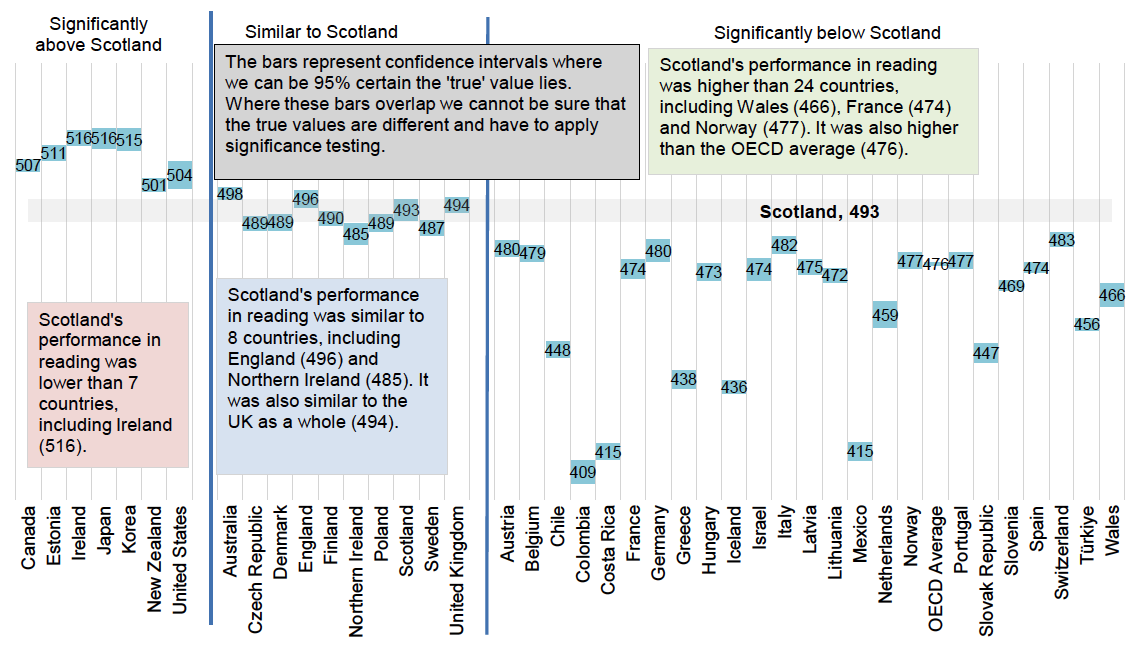
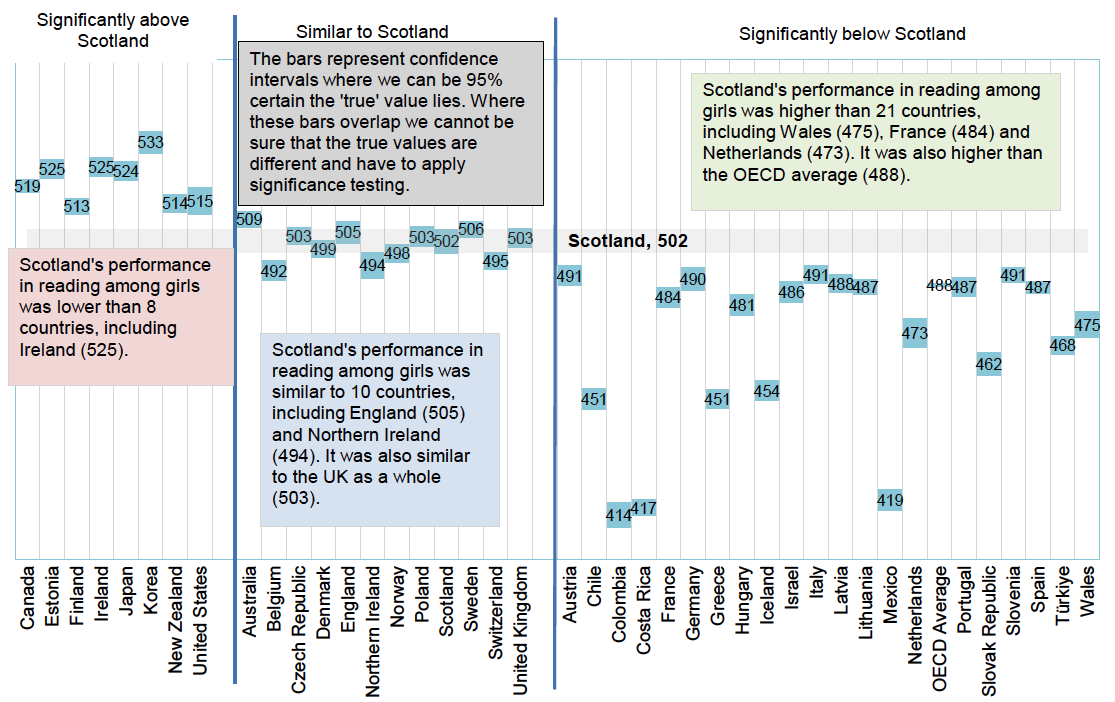
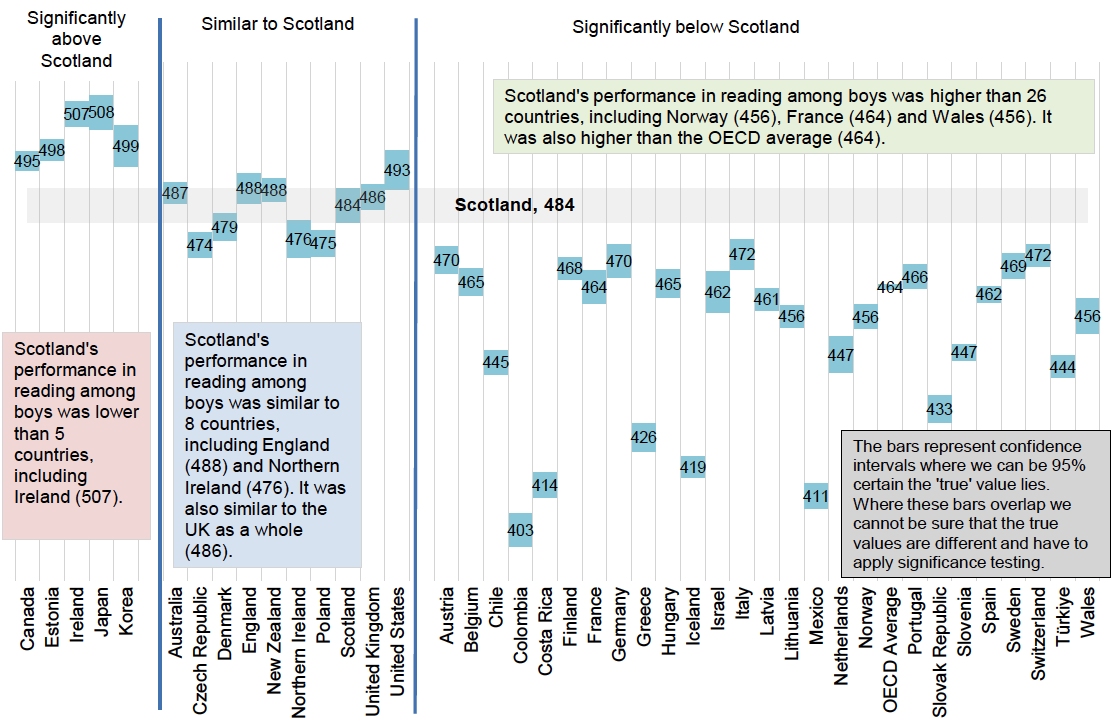
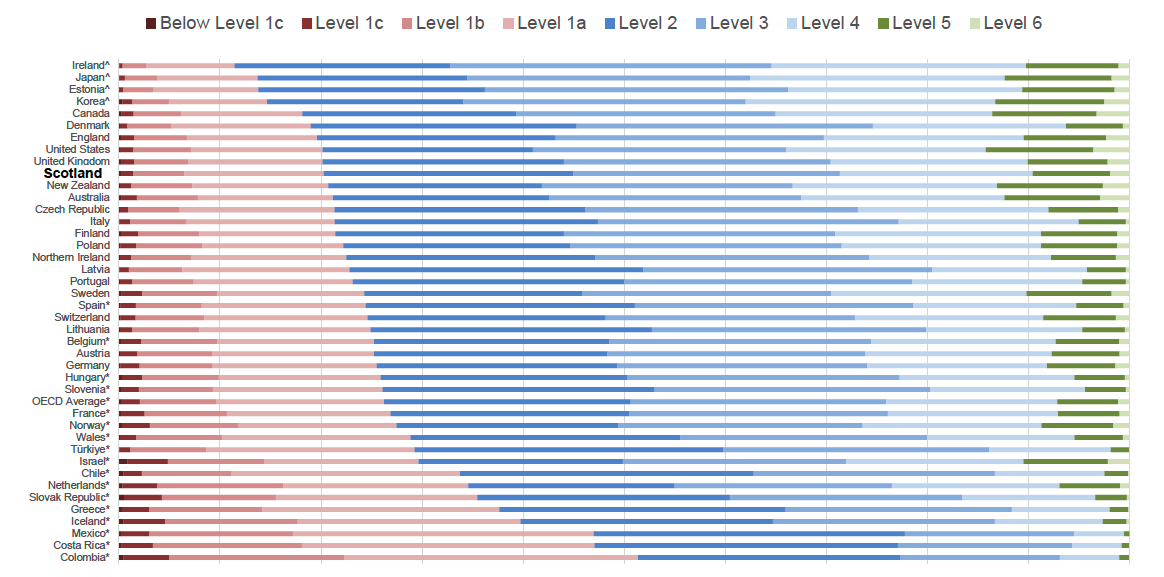
91. In 2022, 20.3 per cent of students in Scotland performed below PISA Level 2 in reading. This was lower (*) than the OECD average and 17 countries, higher (^) than four countries and similar to 18 countries and the UK as a whole.
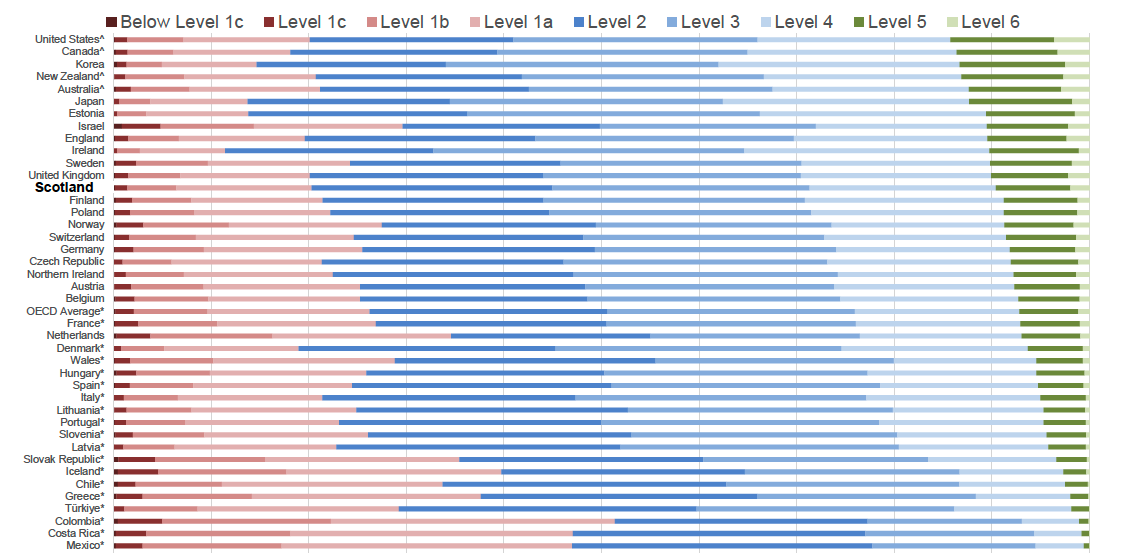
92. In 2022, 9.6 per cent of students in Scotland performed at PISA Level 5 or better in reading. This was higher (*) than the OECD average and eighteen countries, similar to 17 countries and the UK as a whole and lower (^) than four countries.
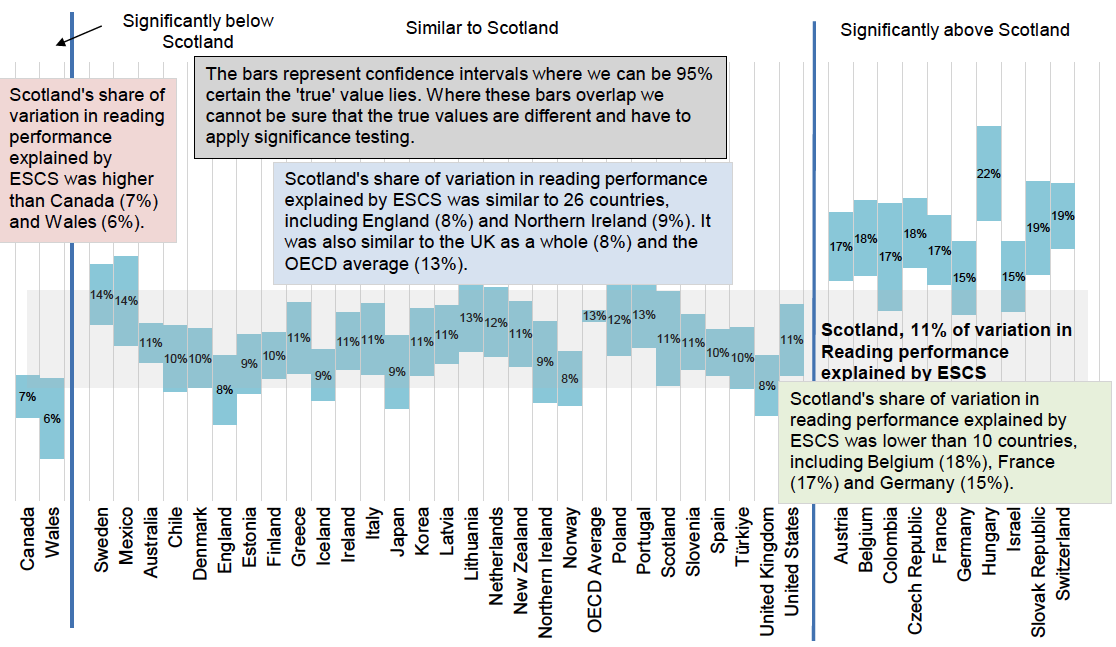
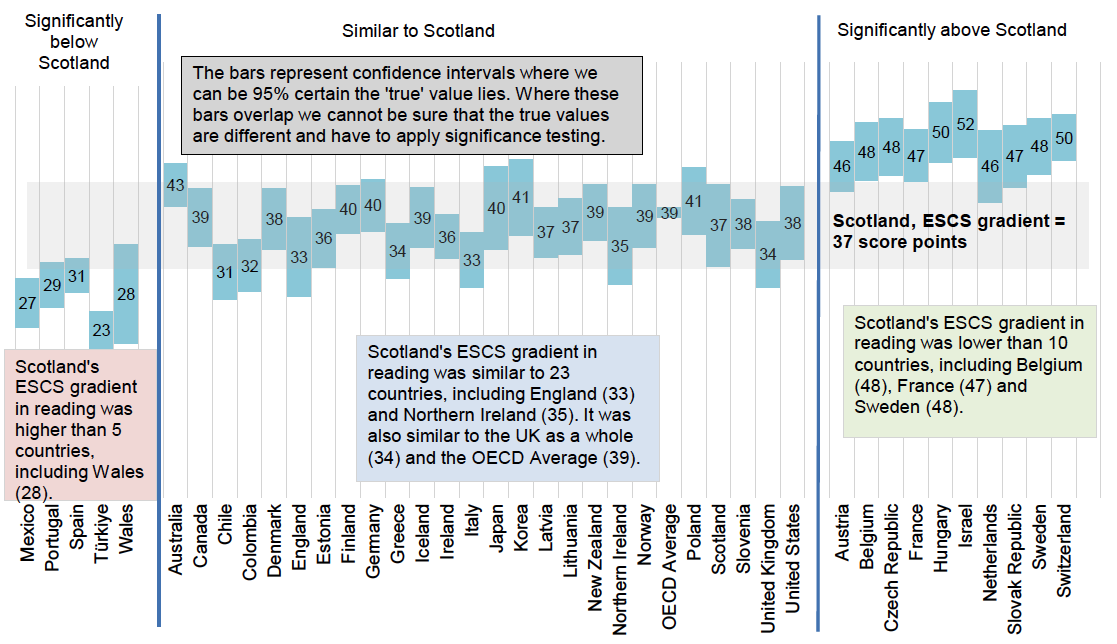
Contact
Email: keith.dryburgh@gov.scot
There is a problem
Thanks for your feedback